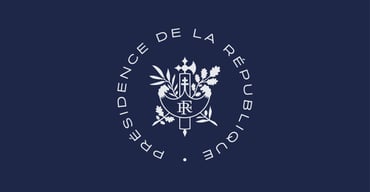A free, open and secure internet is a powerful tool to promote connectivity, enhance social inclusiveness and foster economic growth.
Yet, due to misuses of digital tools and the lack of proper safeguards, children continue to experience violence, exploitation and abuse online every day and in every country. Therefore, children's protection online remains a challenge.
Tragedies befalling young people and families across the globe have highlighted the need to address the risks of violence against children such as inter alia sexual exploitation and abuse, including those leading to self-harming behaviors, technology-facilitated solicitation and grooming, cyberbullying, cyber harassment, cyber procuring, human trafficking, exposure to harmful and violent content, manipulation of information as well as the risks associated with the use of technology itself such as overuse and self-depreciation.
Appreciating the benefits of the digital revolution for children and the improvements and empowerment it brings in the right to education, access to information and knowledge, and the exercise of freedom of expression.
Recognizing that protecting children effectively against online risks is complex and require long-term, multi-sector solutions.
Acknowledging that those solutions should respect human rights and fundamental freedoms online and offline, including the rights of the child as enshrined in the Convention on the Rights of the Child and its three Optional Protocols, as applicable.
Asserting that along with other human rights, the protection of privacy must be a core consideration of any solution aiming at improving the quality of the digital environment.
Considering the efficiency of multi-stakeholder and balanced methods to address complex digital issues such as illustrated by the success of the Christchurch Call to Action to Eliminate Terrorist and Violent Extremist Content Online and the Global Partnership for Action on Gender-Based Online Harassment and Abuse.
Affirming the importance of evidence-based, child-friendly, and trauma-informed approaches and a rigorous evaluation process of policies, regulation and standards with regard to their benefits and costs.
The participants to this initiative decide to collectively form a Laboratory to explore, promote, develop and evaluate solutions aimed at improving the safety of minors in the digital environment including safety and privacy by design products and features to minimize the potential harm.
The Laboratory is designed to address themes relevant to the improvement of the digital environment for children such as appropriate age for accessing content; gender-based violence and harassment; digital literacy; parental engagement and support; privacy protection; transparency and moderation with a particular focus on children most at risk.
The Laboratory seeks to start as a coalition of the willing, with the immediate outcome of breaking down existing silos between governments, civil society organizations and private companies operating in the digital environment. The process governance as described in the Annex will be refined throughout the first year of operation.
All participants intend to benefit from their involvement with respect to their diversity in models and capabilities: to propose concrete improvement based on sound evaluation, to gather key information to help design public policies, to participate in the elaboration of industry best practices and develop new features to make digital services safer for the most vulnerable users.
Objectives
Through the creation of the Laboratory the participants intend to pursue the following objectives to the extent of their respective resources that have been made available and officially announced:
- Share knowledge, information, practice and expertise by engaging with each other and with other non-governmental organizations, companies and researchers to develop new initiatives and build upon existing ones to move toward more efficient policies and best practice that more effectively support and protect children.
- Encourage research and evidence-based approaches to address more effectively the issues affecting children online with regulators and companies.
- Identify technical, organizational or educational tools that are both demonstrated to be effective and to preserve fundamental rights.
Commitments
To that end, we, civil society organizations, companies, governments and researchers decide to:
Participate in the activities of the Laboratory, by taking part in the sourcing, selection and evaluation processes of the experiments the Laboratory will be conducting.
Support some relevant experiments by directly or indirectly providing resources in the appropriate form such as expertise, facilitation or funding, on the basis of a voluntarily determined evaluation protocol established in conformity to the Laboratory’s processes, subject to the availability of resources.
Take appropriate consideration of the experiments’ results in the elaboration of policies and good practices.
Support the development of frameworks, industrial best practices, safety and privacy-oriented design principles or tools that demonstrate their efficacy through the activities conducted by the Laboratory.
Annex to the Children Online Protection Lab Charter.
Latest news
See all articles and topics-
20 September 2022 Speech by the President of the French Republic at the United Nations General Assembly.

-
11 November 2021 Standing up for children’s rights in the digital environment.

-
5 February 2020 President Emmanuel Macron's speech at Jaguellonne University, Krakow

-
14 April 2024 G7 leaders' statement on Iran's attack against Israel.

